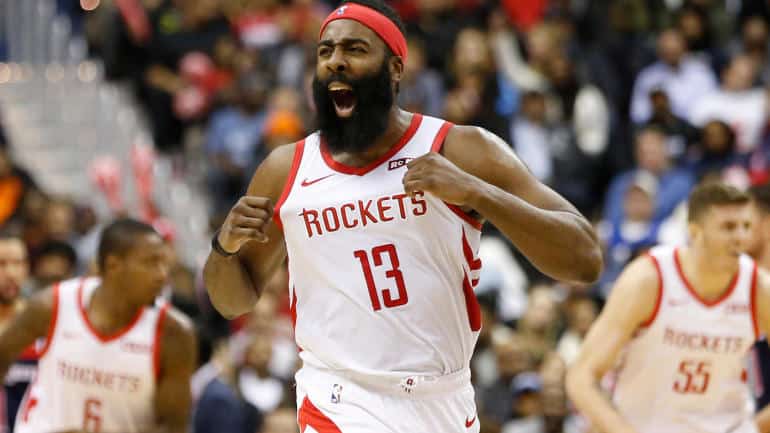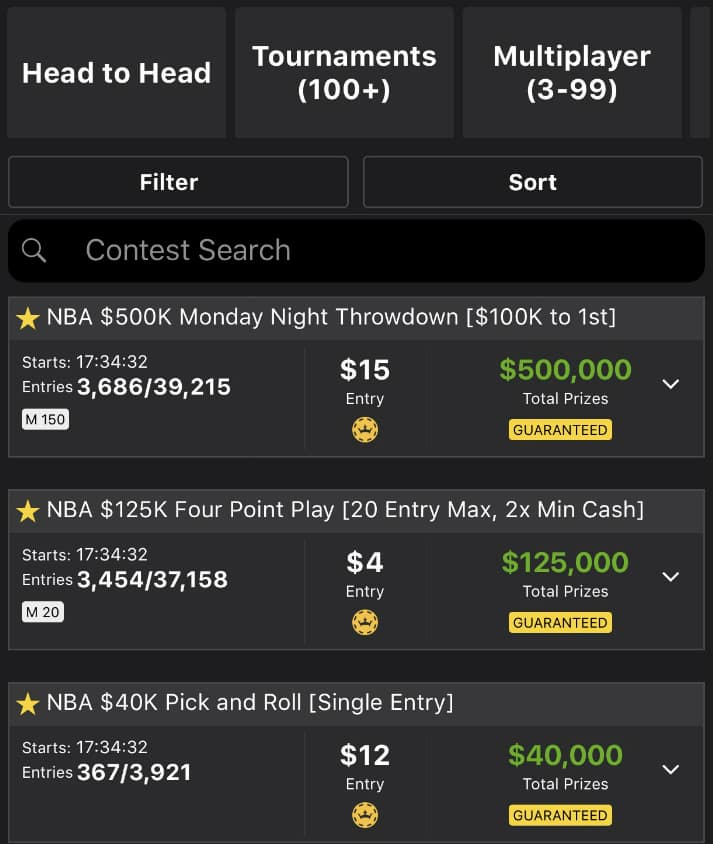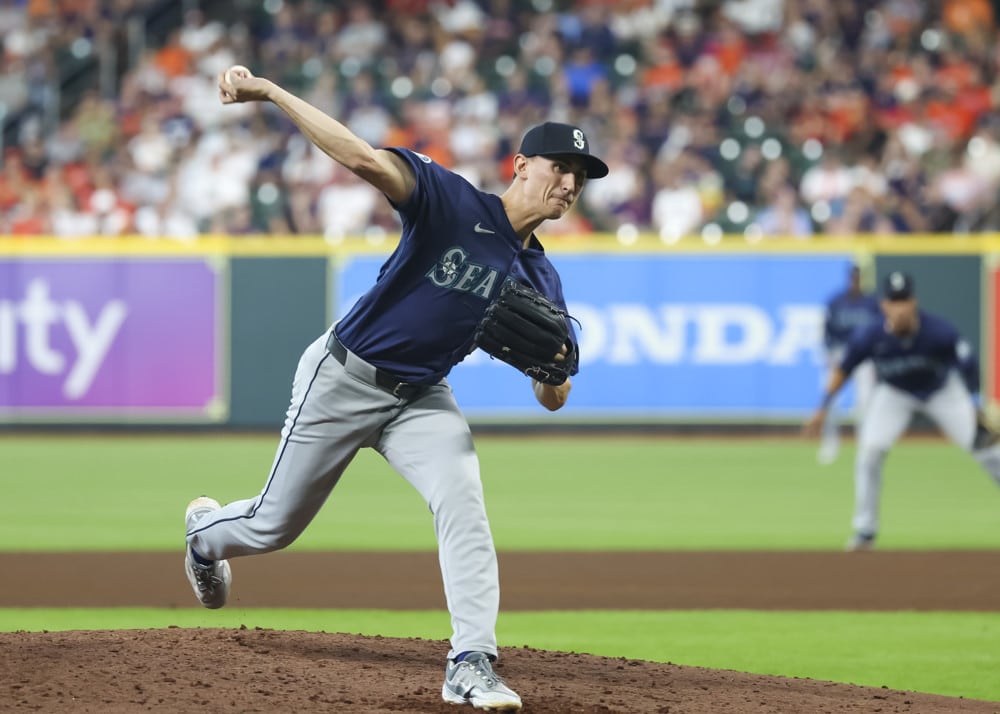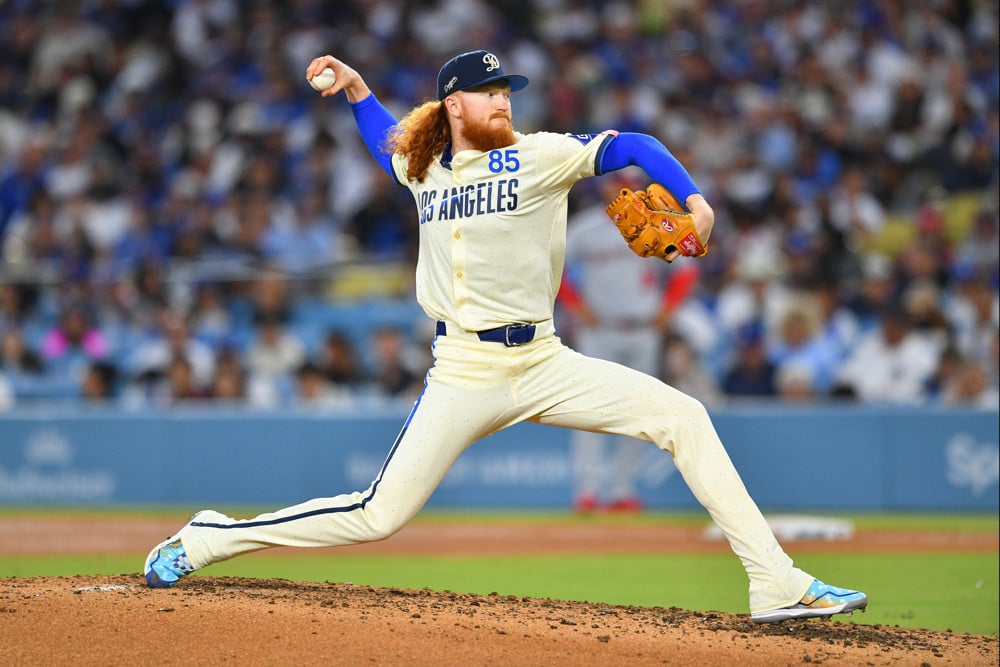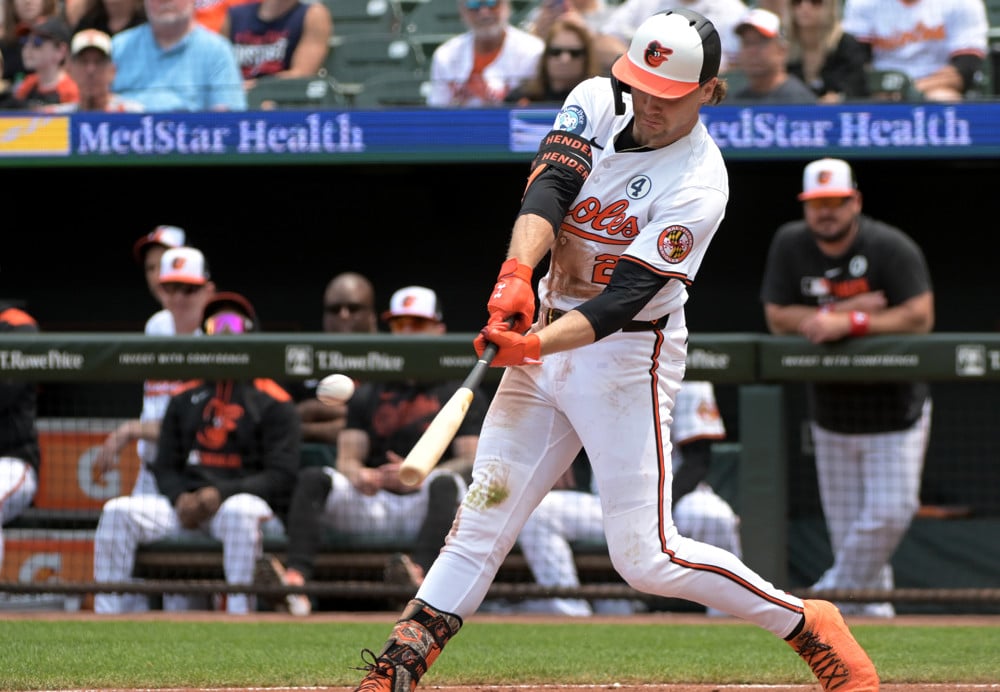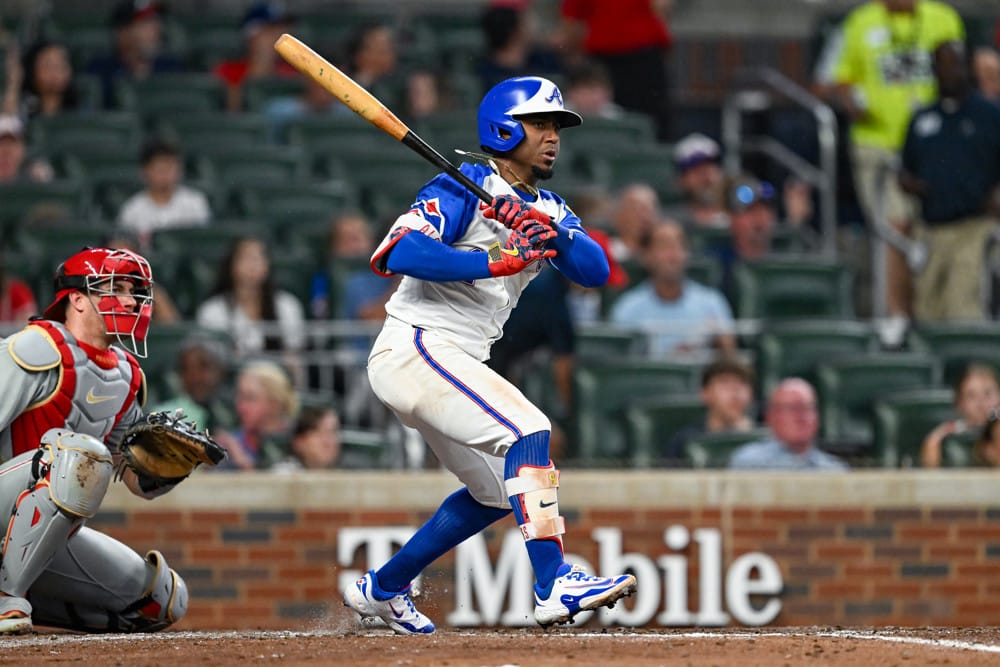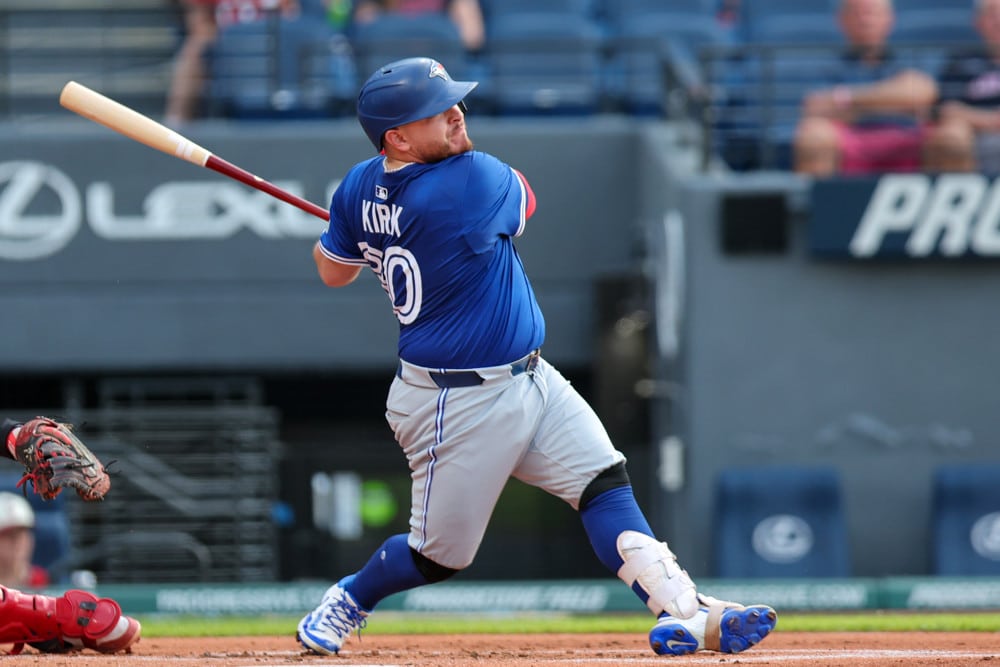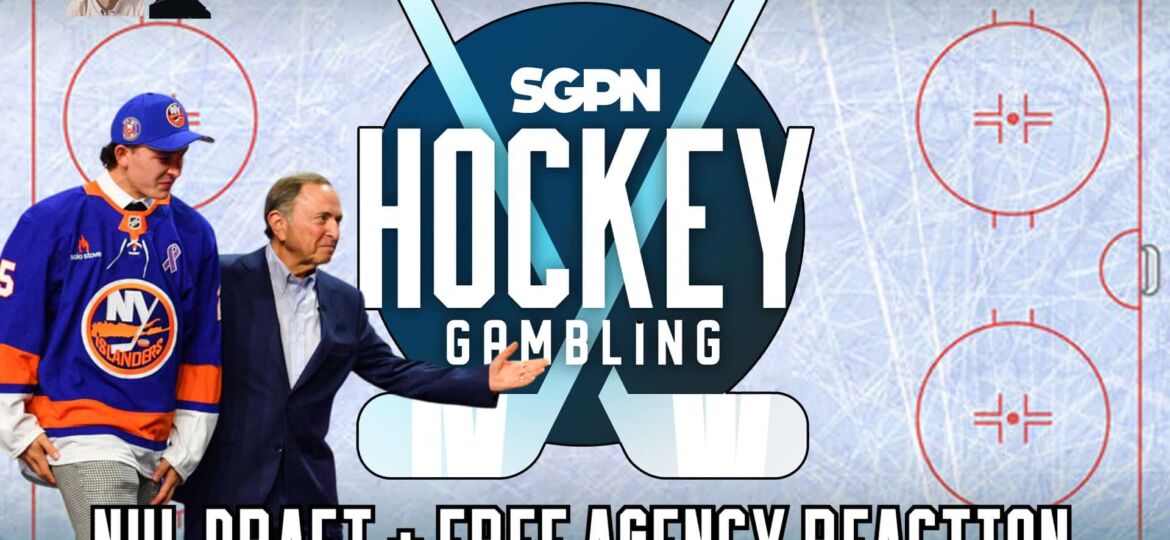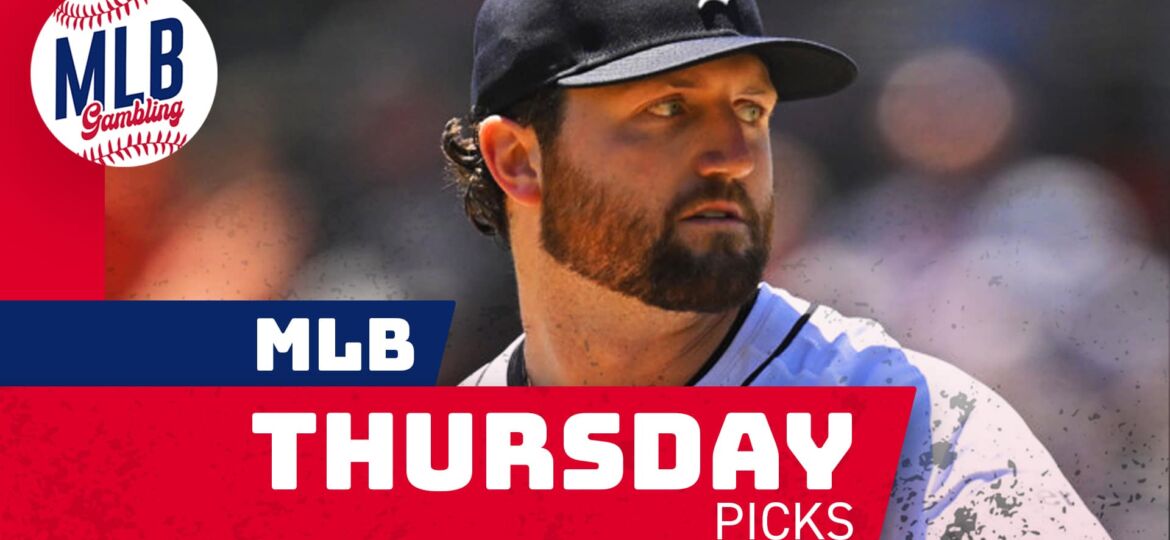Regardless of if you’re new to NBA DFS or a seasoned veteran of the slates, one thing is certain: the landscape of which tournaments you’re playing in is most likely shifting on a near-daily basis. Or at least it should be, especially if you’re trying to make the most bang for your buck. Much like the ever-changing player prices on each daily set of slates, the daily bevy of tournaments to choose from offer a revolving door of value opportunities and situations to suggestively avoid.
In this article I’d like like to shed some light on the different avenues known as Cash Games and GPPs, daily payout structure differentials and outcome expectations, along with knowing your “pond” in relation to where you’re dipping your gambling toes.
Use promo code SGP to sign up for DraftKings’ $64,000 March Madness Bracket Challenge
Cash Games vs. GPPs
Often in accordance with DFS terminology you’ll hear the constant phrases “Cash Games” or “GPPs” being thrown around. For me personally, at first this was mildly confusing as I thought I was playing for cash the entire time and didn’t know what the vaguery in rhetoric was about, and this includes a number of other terms pertaining to what exactly I was doing with my money. So, I’ll briefly give you a rundown on the contrasts of these and how they play into our next topic.
I’m not quite sure when Cash Games were officially branded their categorical separation, but my assumption as to why would be because they’re the closest thing to cash that you’re going to get (at least in terms of payout percentages). These, by technical definition, are any game or tournament where the payout percentage is 50% or higher. This includes: Head-to-Heads, 50/50’s, and Double-Ups. Ultimately, where your actual chance of cashing is higher in these games, your payout total is mitigated by these very standards. If you want to get paid out in larger amounts while sticking to these formats, you must equally wager just as much to risk. You will not see these as blatantly advertised on any website banners because, frankly, the payouts aren’t nearly as attractive versus your risk at hand.
“GPPs” (aka: Guaranteed Prize Pools) makeup the other majority of the types of play available. While these vary in a much broader realm of availability (at least in terms of payout variety), GPPs by definition are constituted by any game or tournament where the payout percentage is less than 25%. These are the beasts that you see flaunted on various forms of advertisements, as their top-down payout structures often drastically drop off after the first four or five entries placing in these arenas. However, these bad boys offer the capability of multiplying your money up to and over 1000x your investment (if you make it to the top).
In the event that you don’t place in the top three to five of these specific brand of contests (ie: a fairly regular basis unless you are a known shark, and given their multitudes of risk, can sometimes be not as often as they’d like), you have to consider the structure beneath these coveted spots and whether or not they’re even worth your time and investments. That’s what brings us to the next topic within our confines…
Payout Structures & Outcome Expectations
Beyond the cut-and-dry payout structure within the Cash Game portion of tournament selection available, the variability of GPP payouts dynamically stagger and restructure beyond a daily basis, but even down to a slately basis within a given day. One tournament you may start off as fond of one day may not be so re-inviting the very next day (and in some per-name tournament recognition instances featured depending on the site, on multiple slates in a day). In that case, you may find some tournaments to be more reliable and less elastically changing in their payout structures but I grew to measure out each one before entering.
Because not only do these payouts change, but as you know, the pool of players and number of games behind them do as well and this leaves you in a predicament when weighing your decision to invest (number of entries, how many dollars you care to risk for the day, etc).
This means a 3-Entry Max GPP on a day where there’s only three games could be enticing considering the player pool options versus dollars you are looking to wager versus the payout structure. On the other hand, you could be looking at literally the exact same situation but it happens to be on a Sunday afternoon so the top placing payouts could be cut in half and the minimum cash payouts (aka: “Min Cash”) remain the exact same as usual, as simply the number of entries at capacity may be 30% less. Given the description of the two situations, I think we both know which is the more attractive one. But had you just entered this based on name recognition, you’d be throwing your money into a higher risk situation for a lousier payout, or whatever the case may be. That’s up to you to calculate on each slate and determine your barometer for risk versus reward.
This also means while one tournament may payout a higher percentage of overall entrants, the percentage of those paid out above “min cash” may be far less intriguing than the structure of a tournament with a bit more risk involved due to a lesser number of entrants paid out. I highly recommend doing these calculations on a per-slate basis right as you’re reserving your entries because you may even catch tournaments with better payout structures offered prematurely to the slate being featured (ie: the night before).
Use promo code SGP to sign up for DraftKings’ $64,000 March Madness Bracket Challenge
Knowing Your “Pond”
Alongside differentiating payout structures and weighing your monetary wherewithal, you’ll also want to consider what I and some others refer to as your “pond”, or basically the scope within the field of your competition [of other parallels to marine life specimen (ie: sharks)]. All things considered, there are rather obvious experience and handicap differences in competition across the valley of games and tournaments available to choose from. This applies to Cash Games as well. For every size pond, there will be a selection of plankton, to minnows, swordfish, sharks, mermaids, whales…make up whatever sea specimen you’d like here. The drift to be taken is that the difference in skill sets per pond these days are quite intensely magnified down to the most minutest of differences, especially with the endless armory of tools and content available to sift through and dabble with in 2019 DFS. There are quite literally lineup differences calculated down to a per-player difference by the hair, only based on a setting difference in a lineup builder or a pivot read in one article over another. I’ve seen them happen.
Point being, you have to consider your player pool and what the dynamics of your opposition’s reach will be. Bear with me. There are limitations for “Highly Experienced” players and in terms of the tournaments they’re allowed to participate in. Depending on the host DFS site, after a certain amount spent (or won, or a combo of both; I’m not sure which since I’m not there yet in life) you’re limited to only higher dollar entry tournaments. This can separate you from the rest of the sharks, should you choose to avoid the higher risk/reward games. Skill isn’t the only lethal factor in your opponent’s repertoire to be aware of. But you need to be mindful of the reality of bankrolls as well.
If you put yourself in a position that you can afford, say $20 in lineups for a day, and are aiming at a $10 entry into a 35,000+ entry GPP with a maximum limit of 150 entries per person. Also, let’s say it’s a nine-game slate, so there’s obviously going to be more than a number of ways to get to some attractive payouts but that also means it could be steep in terms of where “min cash” resides due to higher fantasy point totals overall. With your financial ammunition in hand, you can afford a whopping two lineups in this format. Much of your opposition is also in the same boat, some greater and some as much or lesser than. Then there are the predators among the top: they can max out any tournament you can think of, and also possess a full wealth of their own calculated projection models and algorithms to aid in completing those 150 entries. Not trying to discourage you, but reality is not on your side here. They do this for a living.
On greener pastures, you could max out a $1 20-entry per person maximum tournament, with maybe 45,000 entries total and no sharks allowed into your territory (also in a larger assortment of minnows and plankton). Now suddenly odds are much more heavily in your favor. And also, the top prize might be $2,000. That’s not $100,000, but you have to seriously realize if you won that at the rate you’re playing at then you’d be garnering a 100x profit. That’s pretty damn good if you ask me, and your odds are much higher when there’s nobody else in your pool with more entries than you. The worst case scenario is they’re equally invested. Or even if you can afford half that, it’s still half of the maximum. Much better odds than two versus many instances of 150 per person. It’s a numbers game, in all honesty.
Of course you can always take that hail mary attempt with one large GPP entry you’re feeling good about every once in a while, if your bankroll can sustain the hit should you falter in your quest. So long as you temper your expectations and keep everything discussed here in mind to some degree, you should find yourself in the green more often than the red.


